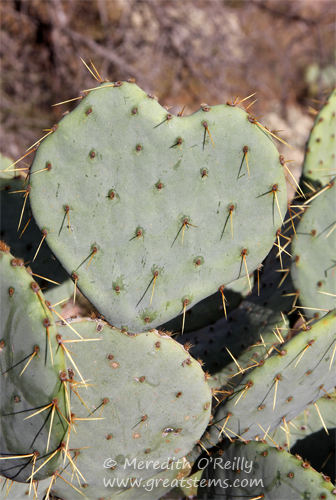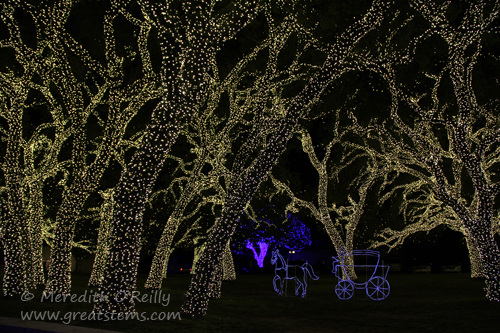In all the world, there are only a few species of plants that form rather remarkable ice sculptures when the air outside drops to sub-freezing temperatures. Of those, I’m lucky enough to grow one species, Frostweed (Verbesina virginica), in my garden.
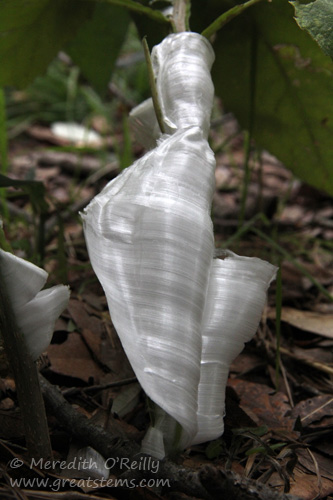 There were two reasons I started growing Frostweed in my wildlife garden. The first is that it is a valuable nectar source for pollinators, especially migrating Monarchs, during its bloom time in the fall. The second is that when conditions are right in the late fall or winter, beautiful curling ice ribbons might exude from the stem’s outer layers.
There were two reasons I started growing Frostweed in my wildlife garden. The first is that it is a valuable nectar source for pollinators, especially migrating Monarchs, during its bloom time in the fall. The second is that when conditions are right in the late fall or winter, beautiful curling ice ribbons might exude from the stem’s outer layers. As temperatures drop, supercooled sap increases the pressure between the stem’s secondary xylem core and the epidermis. When the epidermis can no longer withstand the pressure, it splits open. The emerging sap produces the start of icy creations as the water cools quickly and begins to freeze. Then, because the internal pressure was reduced with the split of the epidermis, water from the plant’s roots moves upward and outward toward the split, contributing to the spectacular sculptures.
As temperatures drop, supercooled sap increases the pressure between the stem’s secondary xylem core and the epidermis. When the epidermis can no longer withstand the pressure, it splits open. The emerging sap produces the start of icy creations as the water cools quickly and begins to freeze. Then, because the internal pressure was reduced with the split of the epidermis, water from the plant’s roots moves upward and outward toward the split, contributing to the spectacular sculptures.
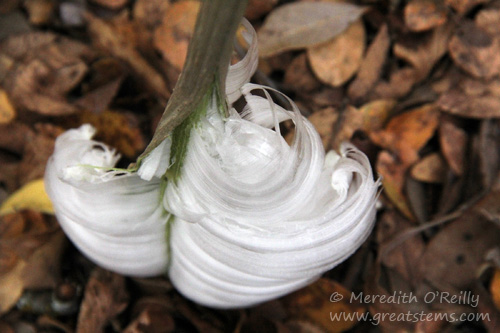
When the water first emerges where the epidermis splits, it does so at right angles to the core, because it exits from single rays which move water peripherally from the pith (center core) toward the living cortex and outer cells, the epidermis.
The beautiful ice ribbons form as water touches adjacent ice crystals and freezes, a repeating process.
The ribbons are thin and delicate. They melt almost instantly when held.
In this image, note the living cortex just inside the epidermis, easily seen where the split starts to taper.
Ice sculptures from Frostweed typically appear at the plant’s base, close to the roots, but this isn’t always the case. Above, the ribbons begin appearing about an inch off the ground. They continue emerging for much of the plant’s stem. As you can see from the plant’s green leaves, the plant was not in a dormant state at the time of the freeze, and water existed well up the stem. This allowed for a particularly impressive ice creation. An unusually hard freeze early in the season might provide the conditions for such a tall sculpture.
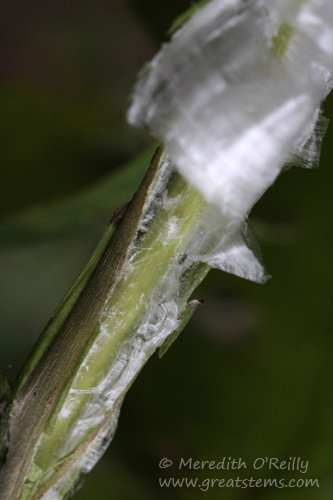 The stem itself does not split. In fact, it can produce additional formations as freezing temperatures occur again in the season. Subsequent formations will usually move lower to the base of the stem, near the roots.
The stem itself does not split. In fact, it can produce additional formations as freezing temperatures occur again in the season. Subsequent formations will usually move lower to the base of the stem, near the roots.
Higher up the stem on a Frostweed plant, decreased pressure might allow the epidermis to split but not emerge forcefully enough to create ribbons.
Why is Frostweed able to do this, while most other plants cannot? A closer study indicates that during freezing temperatures, water must be present in the cortex and tissue just inside the epidermis; typically in Frostweed this occurs at least near base of the plant. Also, the secondary xylem of Frostweed is woody, which allows a framework against which internal pressure from the supercooled sap will push out and lead to the rupture of the epidermis. Additionally, Frostweed’s xylem rays allow water to flow laterally at right angles to the transport tissues, a big factor in the creation of the ice ribbons.
The above image shows the blooms of this excellent wildlife plant. Frostweed grows readily in shade from seed, looking its best in natural woody settings. It can reach heights of 6-8 feet, with clusters of white blooms opening up with copious nectar in fall. I find it a beautiful plant most of the year, but as it grows big, it might flop over, and as the seasons turn cool the foliage admittedly will become less attractive.
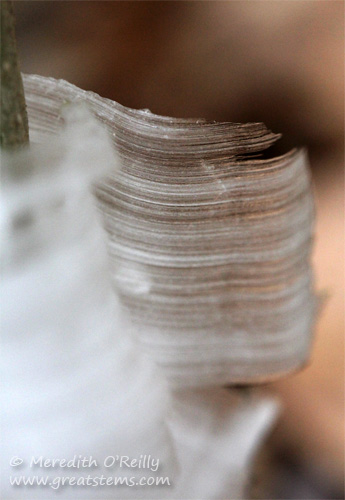
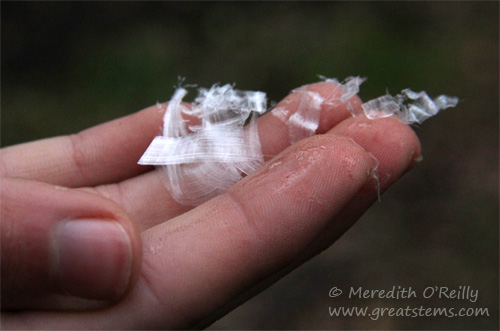
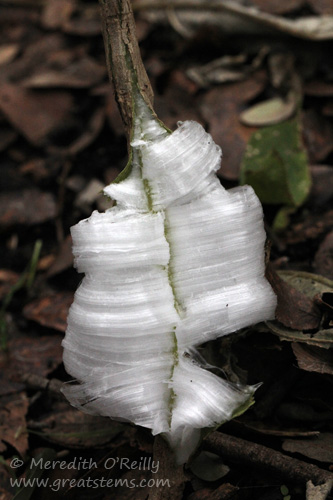
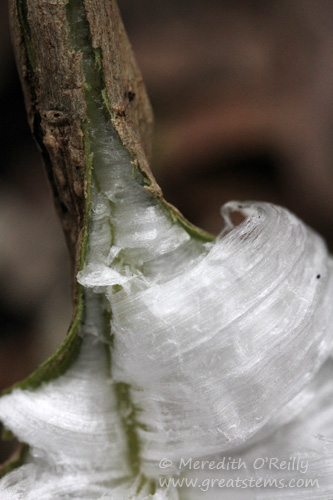

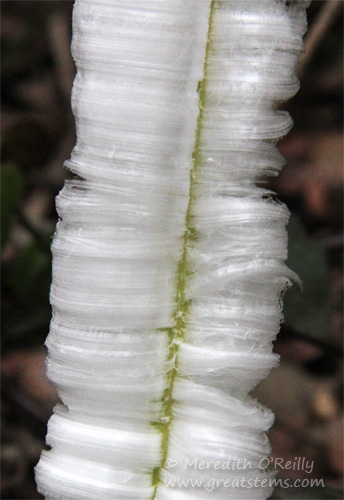
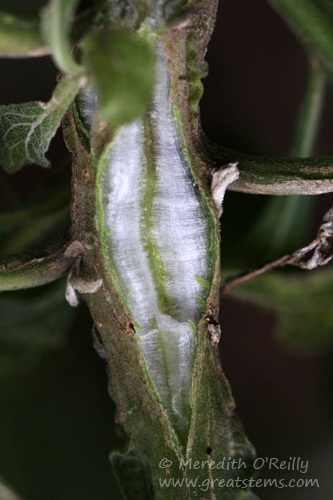
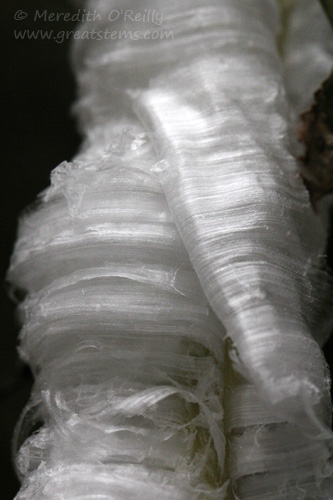
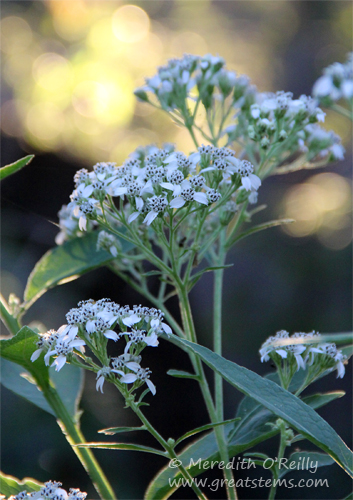

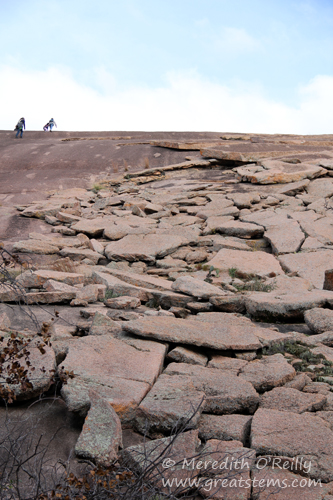
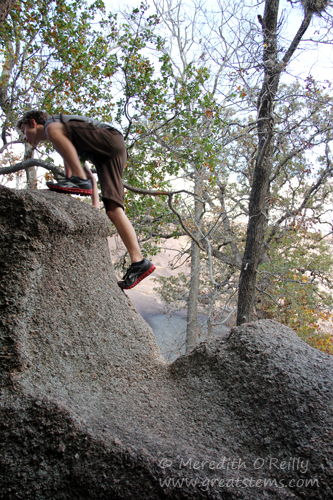


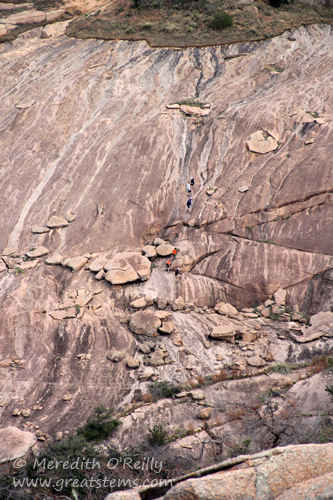
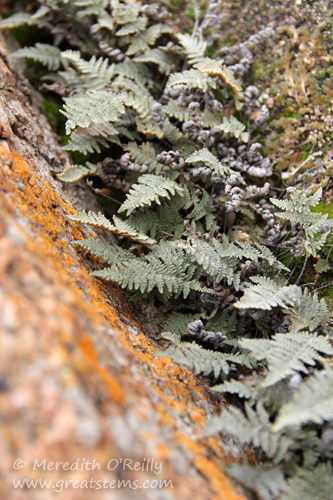
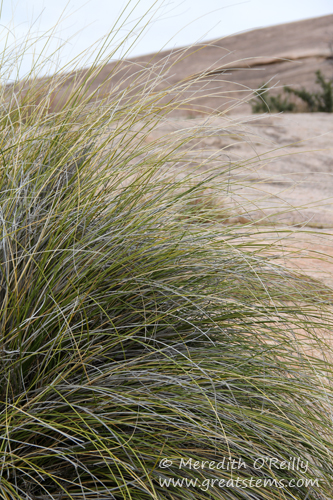
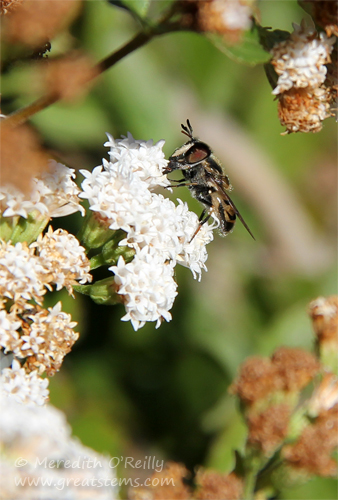
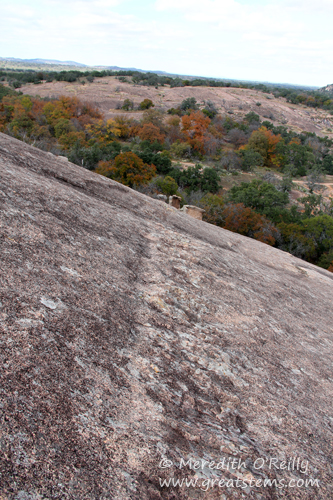
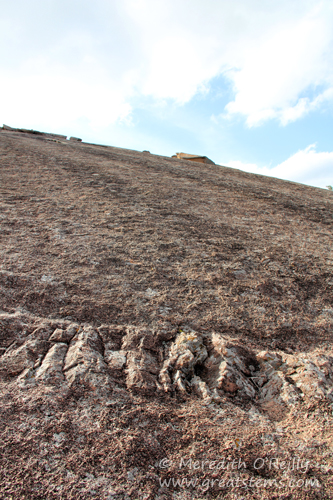
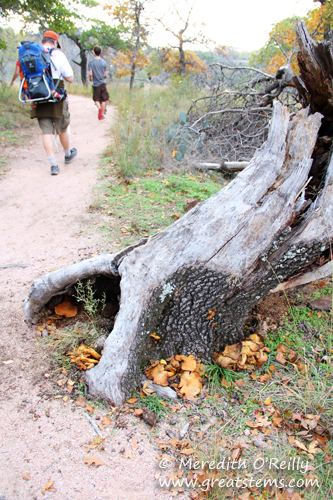
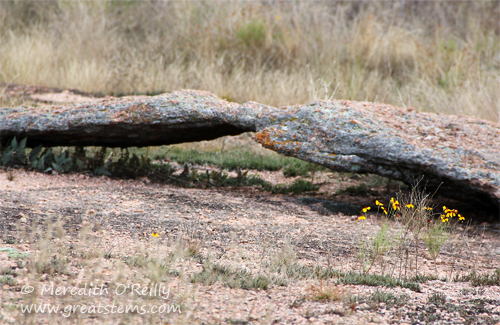
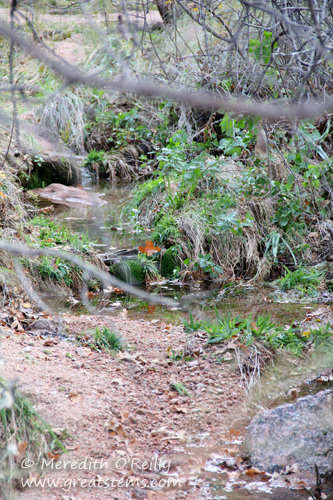

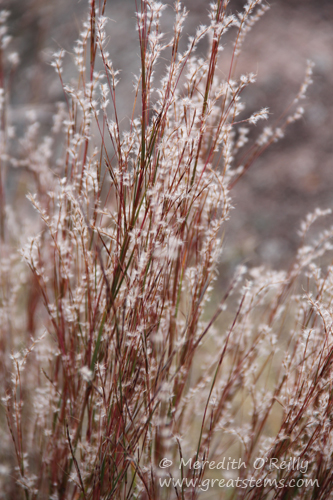
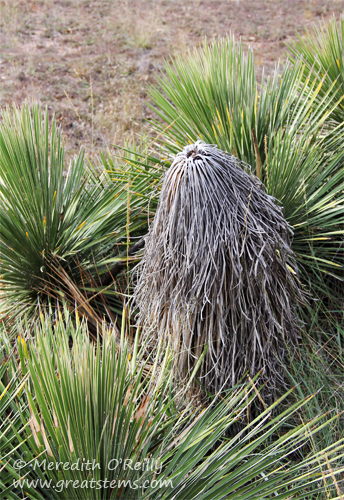 This dead yucca plant surrounded by its living family brings to mind Cousin Itt.
This dead yucca plant surrounded by its living family brings to mind Cousin Itt.